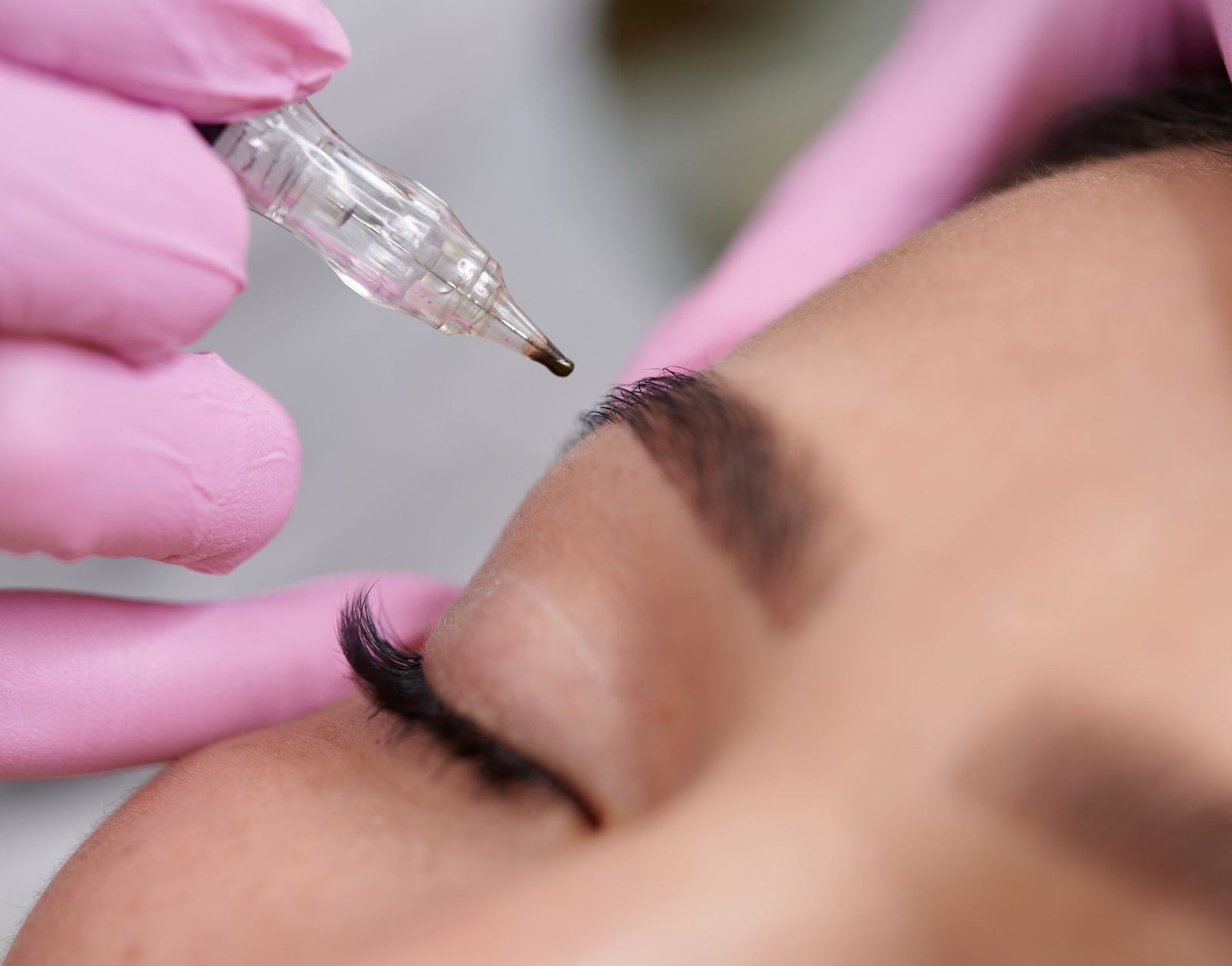Your Cart is Empty
If you want to get the perfect shape for your brows, consider eyebrow microblading. Microblading is an option that will provide you with natural-looking, semi-permanent brows.
A lot of folks use this technique because it is reliable and has no side effects. The procedure is similar to machine-based hair stroke cosmetic tattoos, but the strokes are finer and are not embedded as deeply into the skin as a standard tattoo.

Getting the brows you want begins with selecting the right artist. Your eyebrow artist has the power to make or break your look. It is critical to conduct research before moving forward with the microblading process– choose a well-trained artist and ask to see examples of their previous work.
When you get the best brow artist for microblading eyebrows, you are assured of an excellent result as they'll study your natural brows and create a look that'll perfectly fit your facial structure. Reading reviews and looking at their clients' "before" and "after" pictures is the best way to ensure you're getting someone with the right skills. Also, because your safety is paramount, ensure that the equipment used is sterilized.
Choosing a well-trained artist is critical not only for your safety but also for your overall microblading experience. If the procedure is not followed correctly, the pigment may migrate into the skin and become more permanent.
Tattooing is not the same as microblading. Microblading is a tattooing procedure, but it is not tattooingper se. Tattoos are permanent, whereas microblading pigments fade over time.
Microblading eyebrows is a great option especially if you want semi-permanent eyebrows.
Since it is semi-permanent, microblading requires maintenance every 1-2 years. If your facial features, skin texture, or natural brow color have changed over this tim, the brow artist can make any adjustments necessary after the ink has faded.
Microblading artists have the ability to numb the area they’re working on, but know that microblading eyebrows may come with mild pain, especially during the healing process after your microblading session. You may also experience mild redness and inflammation in the brow area. If you feel that your pain and discoloration is out of the ordinary, don't hesitate to communicate with your technician or see a doctor.
Microblading is not suitable for everyone, and your skin type may influence the results. While your friend's brows may be flawless, you should be aware that not everyone is a great match for microblading.
Certain skin types accept microblading more than others. It is critical to conduct research and find the best technique for you. Many experts believe that drier skin types produce the best results because they retain pigment the best and maintain the crispest strokes. Oilier skin types will also work but will heal with softer and less crisp brow hair strokes.
Also, if you have sensitive skin, you should avoid microblading. Those who are prone to allergies may react to the pigment or develop contact dermatitis.
During the healing process, your new eyebrows will go through several stages. Because the pigment has not yet completely settled in, the color will appear very dark immediately following the procedure. Nevertheless, it will gradually soften with time. When the healing process is complete, you will have a pair of stunning, new, and natural-looking brows.
Also, microblading eyebrows is not recommended for pregnant or nursing women. Those undergoing chemotherapy are advised to complete their treatment because the risk of infection is much higher.
It is worth bearing in mind that the microblading procedure opens the skin, potentially inviting infection. As such, proper skin care is essential.
It’s best to minimize activities that cause excessive sweating during the healing period. Avoid dipping your face in water and applying cosmetics to your brows. It is best to wipe down your new brows with lukewarm water and a cotton round two to three times per day.
This is an important step in keeping your brows free of any lymphatic fluid that may gather as a result of fresh wounds.
To achieve the best healing results, keep your brows out of direct sunlight and avoid cleansers containing retinoids, acids, or exfoliants for the first few weeks following the procedure.
Cover-ups can be difficult if you don't like the outcome of your microbladed brows. Regardless of the technique, the ink type and colors used are difficult to remove, which means that you'll have to live with that brow until it fades. Just make sure you've done your research and are prepared to make this decision.
One of the wrong notions about microblading is that it gets in the way of natural eyebrow growth. Microblading, when done correctly, should have no effect on your natural hair growth. After healing, treat your brows to something extra special with Emilie Heathe Full Up Brow Powder, a unique Japanese-made eyebrow product with top shelf ingredients that encourage brow growth while filling in sparse areas.

